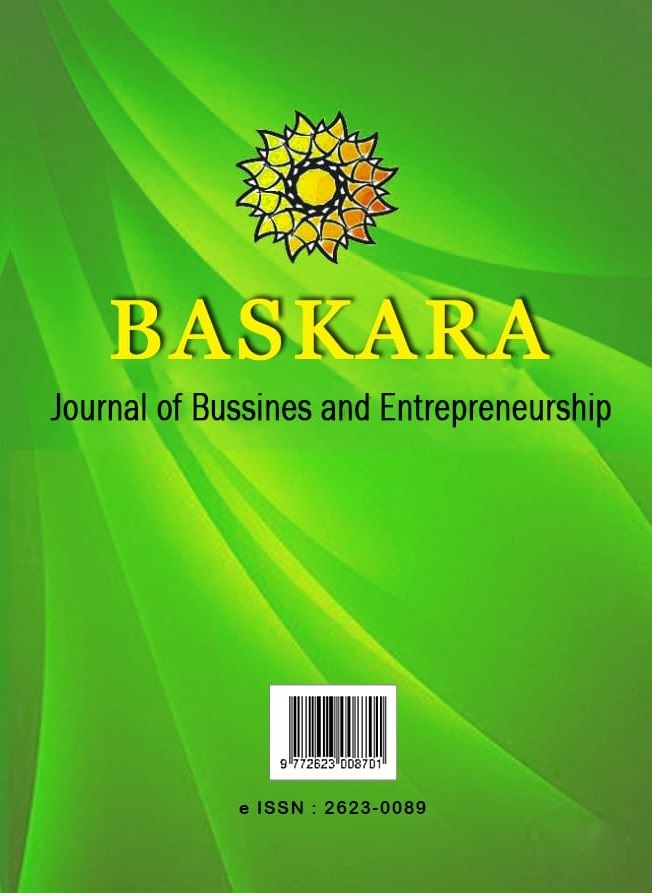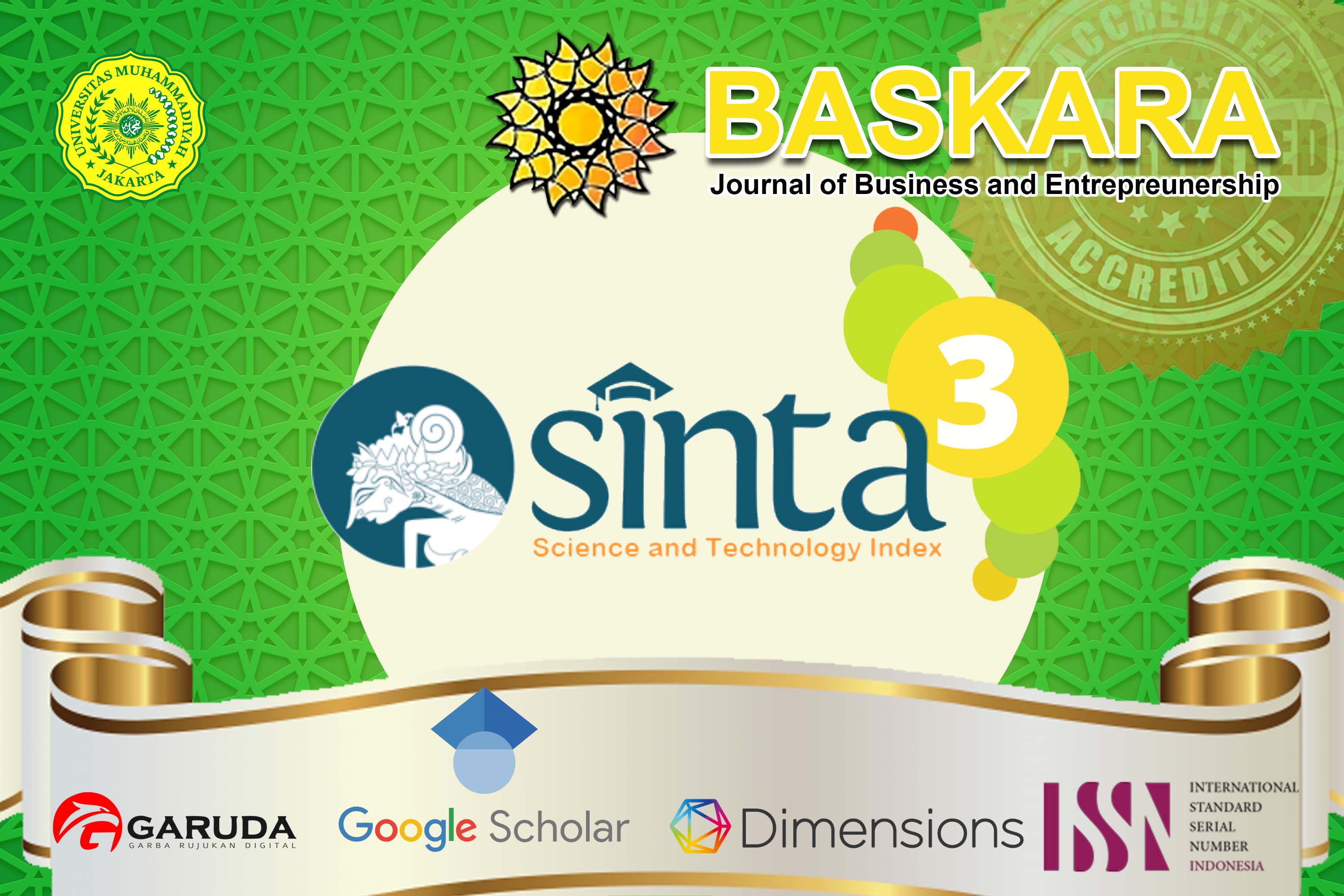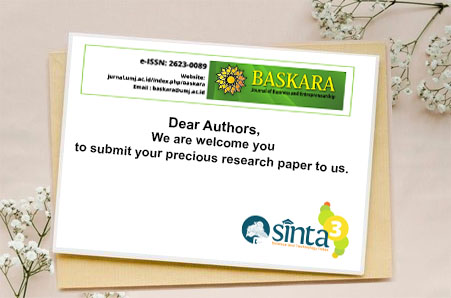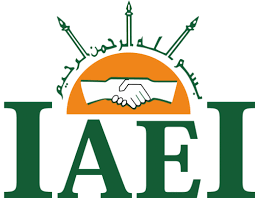Analysis of the External and Internal Environment at the Fire and Rescue Training Centre of DKI Jakarta Province
DOI:
https://doi.org/10.54268/baskara.v6i2.20019Keywords:
External Analysis, Internal Analysis, Training CentreAbstract
Internal and external environmental analysis is a very important initial assessment step in business strategy design. This article examines the external and internal environment at the fire and rescue training center of DKI Jakarta province. The problem in this essay is investigated qualitatively, utilizing descriptive approaches. The data collection method employs triangulation, and data analysis is done inductively. The external environment was evaluated using the Political, Economic, Social, and Technology (PEST) method and Porter's Five Forces, whereas the internal environment was analyzed using the Resource-based View (RBV) approach and the value, rarity, imitability, and organization (VRIO) frameworks. The external environment was analyzed using the Political, Economic, Social, and Technology (PEST) approach and Porter's Five Forces, while the internal environment was analyzed using the Resource-based View (RBV) approach and the value, rarity, imitability, and organization (VRIO) frameworks. The results of the external analysis show that the competitive strength of the Fire Prevention and Suppression Training Centre of DKI Jakarta Province is in the medium category. According to the findings of the internal analysis, the resources and capabilities that give the company a competitive advantage are training buildings, certified instructors, the only government relations, and the ability to design training programs based on needs, while other aspects such as technology, supporting facilities, funding flexibility, excellent service, and forming business partnerships remain competitively parity.References
Abadi, M. K. R., & Hamdan, H. Bin. (2023). Individual Cultural Values and Profit Expectations on Investment Intentions in Crypto Currency: Religiosity as a Moderating Variable. BASKARA : Journal of Business and Entrepreneurship, 6(1), 62–84. https://doi.org/10.54268/baskara.v6i1.18657
Aguilar, F. J. (1967). Scanning the Business Environment. Macmillan.
Amin, R. M., & Rahayu, M. (2018). ANALISIS STRATEGI BERSAING MELALUI PENDEKATAN RESORCE BASED-VIEW GUNA MENCAPAI SUSTAINABLE COMPETITIVE ADVANTAGE (Studi Pada Desa Wisata Sanankerto). Jurnal Ilmiah Mahasiswa FEB, 6(2).
Apriyaningsih, M., Muid, A., & Nurhasanah. (2017). Prototipe Sistem Pemadam Kebakaran Otomatis Berbasis Mikrokontroler Atmega328p. PRISMA FISIKA, V(3), 106–110.
Barney, J. B., & Hesterly, W. S. (2019). Strategic Management and Competitive Advantage: Concepts and Cases (6th ed). Pearson.
BPS-Statistics of DKI Jakarta Province. (2021). Jumlah Peristiwa Kebakaran Menurut Benda yang Terbakat dan Kota Administrasi di Provinsi DKI Jakarta 2018-2021. Https://Jakarta.Bps.Go.Id/Indicator/27/627/1/Jumlah-Peristiwa-Kebakaran-Menurut-Benda-Yang-Terbakar-Dan-Kota-Administrasi-Di-Provinsi-Dki-Jakarta.Html.
Cardeal, N., & Antonio, N. S. (2012). Valuable, rare, inimitable resources and organization (VRIO) resources or valuable, rare, inimitable resources (VRI) capabilities: What leads to competitive advantage? AFRICAN JOURNAL OF BUSINESS MANAGEMENT, 6(37). https://doi.org/10.5897/ajbm12.295
Dasuki, R. E. (2021). Manajemen Strategi: Kajian Teori Resource-Based View. Jurnal Ilmiah Manajemen, 12(3).
Guo, R. R. (2022). The Determinants of Profitability in Processed Food Industry In Indonesia. BASKARA : Journal of Business and Entrepreneurship, 4(2), 96. https://doi.org/10.54268/baskara.v4i2.10980
Harmaini, H. (2021). Factors Affecting Value of Companies (Case Study of The Indonesian Pharmaceutical Industry). BASKARA : Journal of Business and Entrepreneurship, 3(2), 77–92. https://doi.org/10.54268/baskara.3.2.77-92
Lubis, N. W. (2022). Resource Based View (RBV) in Improving Company Strategic Capacity. Research Horizon, 2(6), 587–596. https://doi.org/10.54518/rh.2.6.2022.587-596
Mahadiansar, & Aspariyana. (2020). PEST Analysis Model dalam Pengembangan Potensi Wisata Pulau Benan, Kabupaten Lingga, Kepulauan Riau. Indonesian Journal of Tourism and Leisure, 1(1), 14–25. https://doi.org/10.36256/ijtl.v1i1.93
Muhtadin, I., Yusuf, M., Ramadhan, M. F., & Wahdana, H. (2023). Transformation of Work Discipline, Leadership Style, and Employees Performance Based 21st Century Global Citizens Limited Company. BASKARA : Journal of Business and Entrepreneurship, 6(1), 139–154. https://doi.org/https://doi.org/10.54268/baskara.v6i1.16351
Porter, M. E. (2018). Keunggulan Bersaing menciptakan dan Mempertahankan Kinerja Unggul (Cetakan II). Erlangga.
Tedjakusuma, A. P., Retha, N. K. M. D., & Andajani, E. (2023). The Effect of Destination Image and Perceived Value on Tourist Satisfaction and Tourist Loyalty of Bedugul Botanical Garden, Bali. BASKARA : Journal of Business and Entrepreneurship, 6(1), 85–99. https://doi.org/10.54268/baskara.v6i1.18683
Wandrial, S. (2011). ANALISIS INTERNAL PERUSAHAAN (STRENGTH & WEAKNESS), MENGGUNAKANKONSEP “RESOURCE-BASED VIEW OF THE FIRM” DENGAN KERANGKA VRIO. Binus Business Review, 2(2), 627–637.
Downloads
Published
Issue
Section
License
In order for Baskara: Journal of Business and Entrepreneurship to publish and disseminate research articles, we need publishing rights (transfered from author(s) to publisher). This is determined by a publishing agreement between the Author(s) and Baskara Journal. This agreement deals with the transfer or license of the copyright of publishing to Baskara: Journal of Business and Entrepreneurship, while Authors still retain significant rights to use and share their own published articles. Baskara : Journal of Business and Entrepreneurship supports the need for authors to share, disseminate and maximize the impact of their research and these rights, in any databases.
As a journal Author, you have rights for a large range of uses of your article, including use by your employing institute or company. These Author rights can be exercised without the need to obtain specific permission. Authors publishing in Baskara : Journal of Business and Entrepreneurship have wide rights to use their works for teaching and scholarly purposes without needing to seek permission, including:
- use for classroom teaching by Author or Author's institution and presentation at a meeting or conference and distributing copies to attendees;
- use for internal training by author's company;
- distribution to colleagues for their reseearch use;
- use in a subsequent compilation of the author's works;
- inclusion in a thesis or dissertation;
- reuse of portions or extracts from the article in other works (with full acknowledgement of final article);
- preparation of derivative works (other than commercial purposes) (with full acknowledgement of final article);
- voluntary posting on open web sites operated by author or author’s institution for scholarly purposes.
Copyright Transfer Agreement for Publishing (Publishing Right)
The Authors who submit manuscript has to understand that if accepted for publication, mean that all copyright and publishing right of the article shall be assigned/transferred to Baskara: Journal of Business and Entrepreneurship as assigned publisher.
- CC BY-NC: This license allows reusers to distribute, remix, adapt, and build upon the material in any medium or format for noncommercial purposes only, and only so long as attribution is given to the creator.
It includes the following elements:
BY ![]() – Credit must be given to the creator
– Credit must be given to the creator
NC ![]() – Only noncommercial uses of the work are permitted
– Only noncommercial uses of the work are permitted
Baskara (C) Copyright (2022):
BASKARA: Journal of Business and Entrepreneurship by https://jurnal.umj.ac.id/index.php/baskara
is licensed under a Creative Commons Attribution-NonCommercial 4.0 International License








